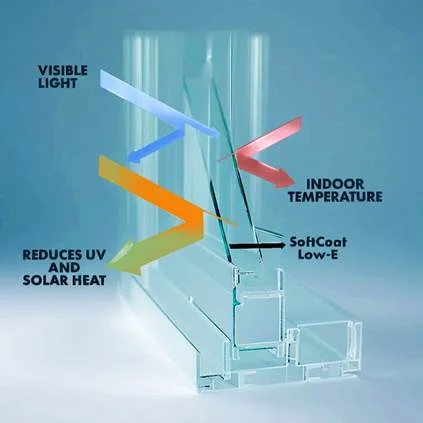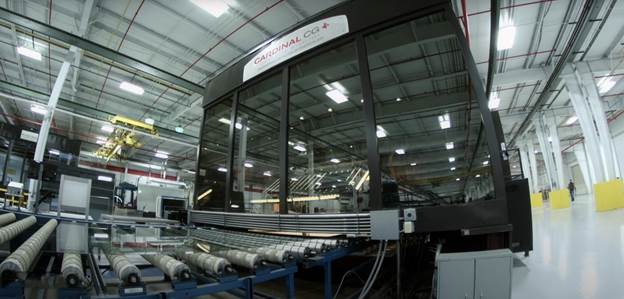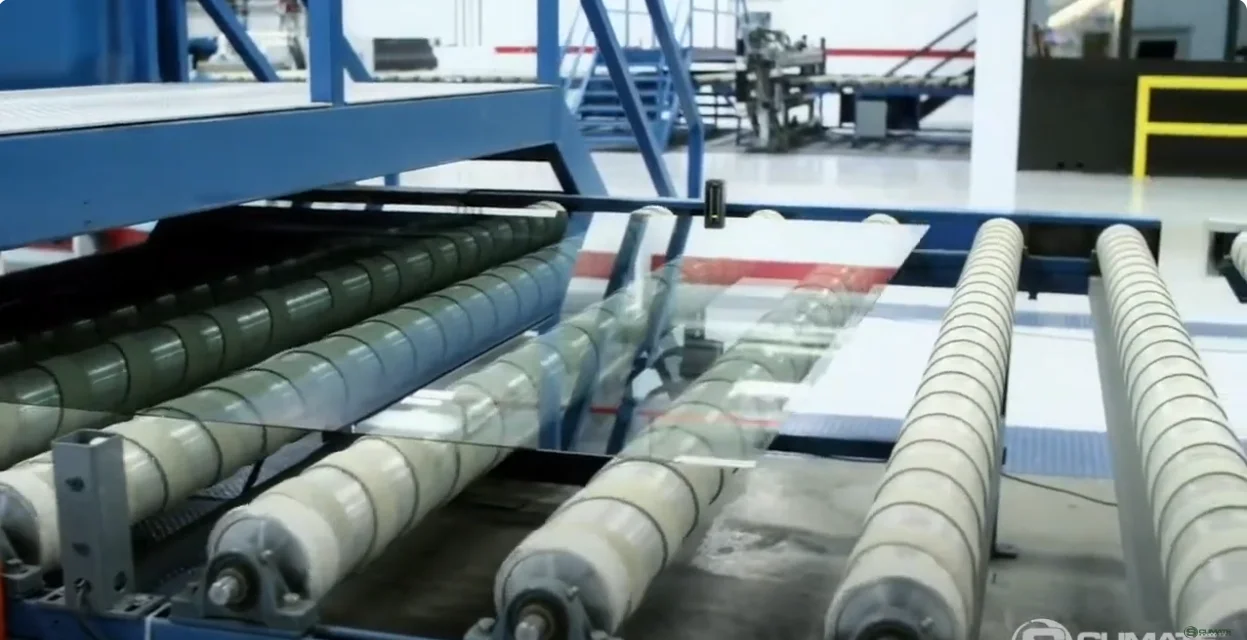Energy-efficient windows have revolutionized modern home design, with Low-E (low emissivity) glass playing a critical role in improving insulation, reducing energy costs, and increasing indoor comfort. But what exactly is Low-E glass, and how is it made? In this blog, we’ll explore the science behind Low-E coatings, how they work, and the manufacturing process that makes them an essential part of energy-efficient windows.
What Is Low-E Glass?

Low-E glass is specially coated to minimize the amount of infrared and ultraviolet (UV) light that passes through the glass while allowing visible light to enter. This means that heat from the sun can be controlled, keeping homes cooler in the summer and warmer in the winter without sacrificing natural light.
At its core, Low-E glass works by controlling thermal radiation, which is the process of heat transfer via electromagnetic waves. The coating reflects heat energy, reducing the amount of warmth that escapes in the winter and preventing excessive heat gain in the summer.
The Science Behind Low-E Coatings

The secret to Low-E glass lies in its microscopically thin metallic or metal oxide coatings, which are applied to the glass surface. These coatings work in two key ways:
-
- Reflecting Heat – Low-E coatings reflect infrared radiation (heat). In cold weather, they reflect indoor heat back into the home. In hot weather, they reflect the sun’s heat away, keeping interiors cooler.
-
- Blocking Harmful UV Rays – Low-E coatings reduce the amount of UV radiation entering a home, helping to prevent furniture, flooring, and fabrics from fading over time.
Low-E coatings are engineered to optimize performance based on climate and home orientation. They are classified into two main types:
-
- Hard-Coat Low-E (Pyrolytic Process) – Applied during the float glass manufacturing process, creating a durable bond. Ideal for colder climates because it allows some solar heat gain.
-
- Soft-Coat Low-E (Magnetron Sputtering Process) – Applied in a vacuum chamber after the glass is manufactured. This version offers superior insulation and is commonly used in warmer climates where solar heat gain needs to be minimized.
How Low-E Glass Is Manufactured

The process of making Low-E glass involves precision technology and advanced coating techniques. Here’s a look at how it’s made:
1. Float Glass Production
Low-E glass starts as float glass, which is manufactured by floating molten glass on a bed of molten tin. This process ensures the glass is perfectly flat and free of distortions.
2. Coating Application
Depending on the type of Low-E glass being produced, the coating is applied using one of two methods:
-
- Hard-Coat Low-E: The coating is added while the glass is still hot (around 1,100°F), forming a durable, permanent layer.
-
- Soft-Coat Low-E: The glass is cooled first, then placed in a vacuum chamber where layers of silver, zinc, or tin oxide are applied through a process called magnetron sputtering. This method provides a more effective thermal barrier.
3. Glass Cutting and Tempering
Once coated, the glass is cut into sheets and may undergo tempering or laminating for additional strength and safety. Tempered Low-E glass is stronger and, if broken, shatters into small, less harmful pieces.
-
- Insulated Glass Unit (IGU) Assembly

Most Low-E glass is incorporated into double-pane or triple-pane windows. These panes are sealed together with a spacer, and the space between them is often filled with argon or krypton gas to further enhance insulation.
Why Choose Low-E Glass?
Investing in Low-E glass windows provides numerous benefits:
✅ Energy Savings – Reduces heating and cooling costs year-round.
✅ Enhanced Comfort – Minimizes temperature fluctuations and drafts.
✅ UV Protection – Blocks harmful rays that fade furniture and flooring.
✅ Sustainability – Lowers energy consumption, reducing your carbon footprint.
Final Thoughts
Low-E glass is a game-changer in modern window technology, offering energy efficiency without compromising natural light. Whether you’re looking to upgrade your home with replacement windows or are building a new home, choosing Low-E glass ensures long-term comfort and savings.
If you’re considering new windows, our team specializes in high-performance Low-E window installations. Contact us today to learn how we can help improve your home’s efficiency and comfort!

